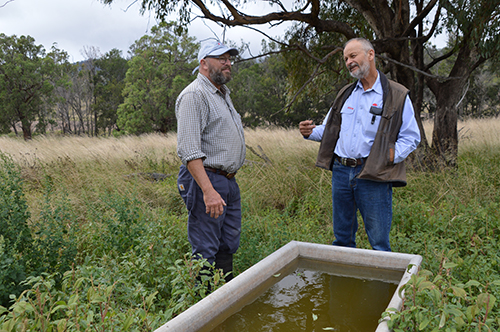Local Land Services and farmers working to rehabilitate Big Jacks Creek
Roger Ottery, Willow Tree and Tim Watts, Senior Land Services Officer, North West Local Land Services.
North West Local Land Services and landowner Roger Ottery have undertaken a project to rehabilitate a portion of Big Jacks Creek in the Upper Liverpool Plains. The project that started in 2019 has already shown a major improvement in the water quality. Big Jacks Creek is now much healthier flowing through Roger Ottery’s property. The riverbanks were once mainly just bare ground. Now, trees and vegetation have grown where only dirt could be seen two years ago.
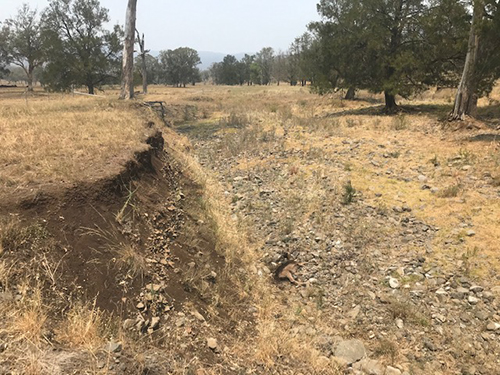
Big Jacks Creek prior to the rehabilitiation project.
Stock fencing the creek
To enable the river to regenerate, Roger with assistance from Local Land Services stock fenced 1.6km of the creek. On Roger’s property there can be up to 170 cows grazing and the creek was a favourite spot. “We had a fairly degraded creek because the cattle were virtually living down there every day. They ploughed the banks when it was wet and when it was dry it was a real dust bowl,” he said.
Fencing the riverbanks to manage cattle grazing in the creek was a major component of the project. The cattle now only graze the riparian area two or three times a year for short periods and at high stock number densities. This allows for long recovery periods and for vegetation to regrow and groundcover maintained while still being utilised for production.
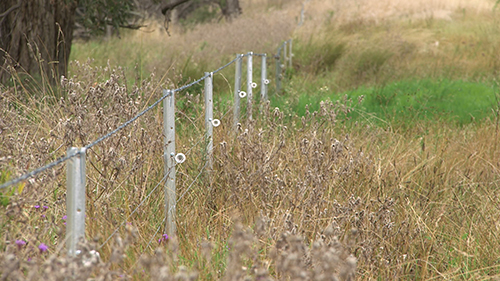
There has been 3.2km of electric fencing installed along the creek to manage cattle grazing.
This grazing regime will also benefit the water quality of the creek as there will be less manure entering the stream and instead it will fertilise grazing paddocks.
“If we can keep stock out of our river systems, we can get much cleaner water that can be pumped from the river around the farm with off stream water reticulation systems,” says Tim Watts, Senior Land Services Officer with North West Local Land Services. Since the cows no longer have access to the creek to drink, additional water troughs have been installed contributing to better grazing management throughout the farm.
Slowing down the river flow
The rest of the work has been done by nature itself. Fallen timber and vegetation has been washed down during high flow events and formed structures across the creek.
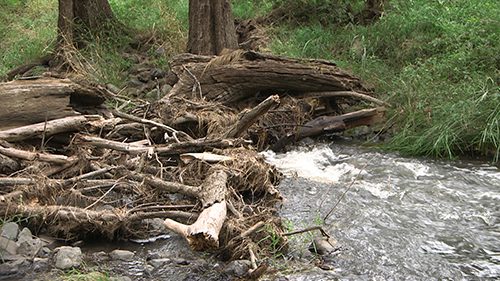
Fallen timber and vegetation create natural leaky weirs throughout the creek.
These natural leaky weirs create pools that hold water in the creek. This allows riparian vegetation to grow. All these elements help raise the water level of the creek and slow down the flow of the river. “If we can slow the water down, it’s far less erosive and it gives that water a much better chance to get into the ground instead of draining away from the countryside,” explains Tim Watts.
Roger applied for funding through North West Local Land Services in late 2018 and completed the works in June 2019. “We started the project in the middle of that significant drought that we had recently and at the time it was sort of questionable what we were going to achieve. We had no water, we had no grass but a year after, it started to rain again and the results of the rehabilitation project are clearly visible,” he said.
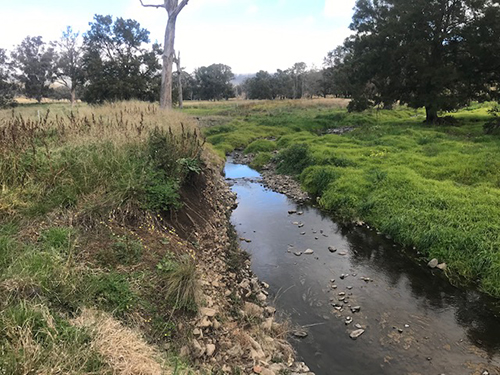
Big Jacks Creek one year into the rehabilitation project.
This project was supported by North West Local Land Services through funding from Catchment Action NSW.
Want more information?
Check out the video on the project below or download a copy of the case study PDF, 667.03 KB.
